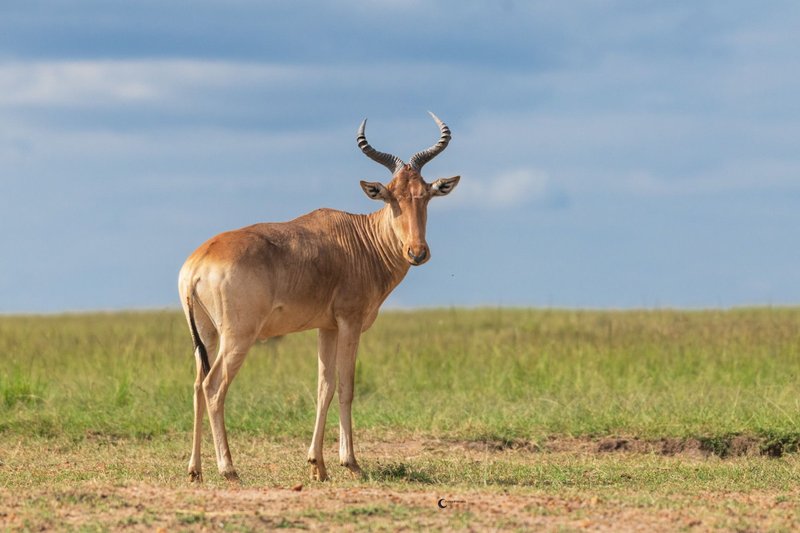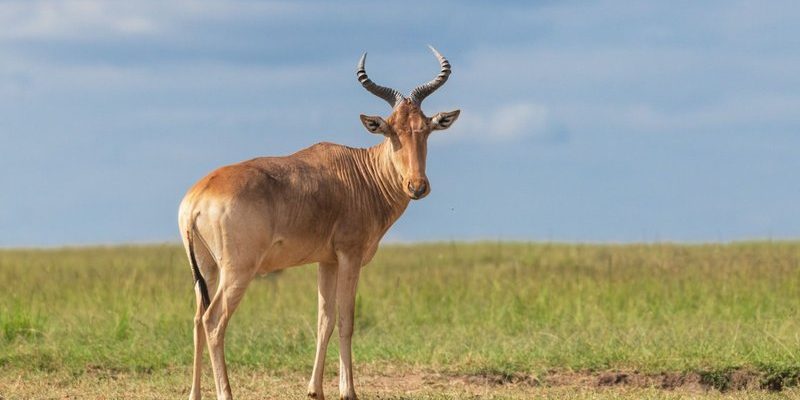
Honestly, the hartebeest isn’t the first animal that would strike fear into anyone’s heart. It’s not a lion or even a crocodile. However, there are some interesting angles to this question that might surprise you. Let’s dig deeper into the world of the hartebeest, exploring its behavior, habitat, and potential risks to humans.
What Is a Hartebeest, Anyway?
To understand whether hartebeests are dangerous, we should first know what they are. Hartebeests are large antelopes found mainly in sub-Saharan Africa. They have long legs, elongated faces, and, unlike many other antelopes, their horns curve backwards then twist, making them quite distinctive. You can find them roaming savannas and grasslands, where they graze on grasses and leaves.
These animals are social creatures, often seen in herds that can range from a few to several dozen individuals. Living in groups not only helps them find food but also provides safety in numbers. When it comes to human interaction, the hartebeest tends to be skittish and will usually run away if it senses danger. But what happens when they feel threatened?
Are Hartebeests Aggressive?
It’s a common misconception that all animals in the wild are inherently aggressive. In the case of the hartebeest, they’re generally not aggressive unless provoked. It’s essential to think of them more like startled deer. If a hartebeest feels threatened, either by a predator or a human getting too close, it might react defensively.
Some people may wonder, “What does threatened mean for a hartebeest?” Essentially, if they feel cornered or if a herd member is being attacked, they might kick or charge. Their long legs make them powerful, and a swift kick can certainly hurt if it connects. Though they prefer flight over fight, it’s wise to give them their space.
Encounters with Humans
So, what do encounters between hartebeests and humans typically look like? Most of the time, they’re rather uneventful. People on safari or hiking in their natural habitats usually observe them from a distance. Hartebeests aren’t known to approach humans, and they tend to keep a healthy distance from any perceived threat.
However, misunderstandings can happen. If a human unwittingly gets too close to a calf, for example, the mother might react defensively. It’s a bit like when you stand between a mother bear and her cub—things can get tense quickly! That said, it’s important to respect wildlife and their young, keeping a safe distance to avoid any unpleasant surprises.
Defensive Behavior
You might be wondering just how a hartebeest defends itself or its young. When threatened, these animals can display some fascinating behaviors. For instance, they’ll often stomp their front feet, snort, and make loud noises to warn off potential threats. This is similar to how some birds puff up and squawk to deter intruders.
In rare cases, if they feel cornered, a hartebeest might chase a human. However, this is less about aggression and more about an instinctual response to protect themselves. It’s crucial to remember that hartebeests are not naturally inclined to attack; they would much rather flee than stand their ground.
What to Do if Encountering a Hartebeest
If you find yourself in the presence of a hartebeest, the best approach is to remain calm and slowly back away. Never approach them, especially in the wild where they might feel threatened. Here are some tips for navigating such an encounter:
- Stay Calm: Don’t make any sudden movements.
- Observe from a Distance: Use binoculars or a zoom lens to watch them without intruding on their space.
- Don’t Feed Them: This can encourage aggressive behavior and make them reliant on humans.
- Keep Pets Leashed: If you’re hiking with a dog, keep it under control to prevent startling the hartebeest.
Remember, a great experience in nature comes from respecting wildlife and understanding their behaviors.
Are They a Threat to Livestock?
You might be curious how hartebeests interact with livestock. In some regions, especially where their habitats overlap with farms, these animals can be seen as a nuisance. They might compete for grazing resources, which can lead to conflicts with farmers.
However, they are not aggressive toward livestock in a predatory sense. Think of them more as competition in the food game. Farmers often work to find a balance, ensuring both wildlife and livestock can thrive. It’s a complex issue rooted in human-wildlife interactions, much like balancing a dance—one wrong step and you could disrupt the rhythm.
In conclusion, while the hartebeest can be a powerful and impressive animal, it’s not naturally dangerous to humans. Most encounters are harmless, and these creatures prefer to avoid confrontation. By understanding their behavior and respecting their space, we can appreciate their role in the ecosystem without putting ourselves in unnecessary risk.
Next time you think about wildlife, remember the hartebeest isn’t out to get you. They’re just trying to live their lives, much like we are. With a little awareness and respect, we can coexist peacefully with these fascinating animals. So, if you ever spot one on a safari or in a nature reserve, take a moment to admire it from a respectful distance!

